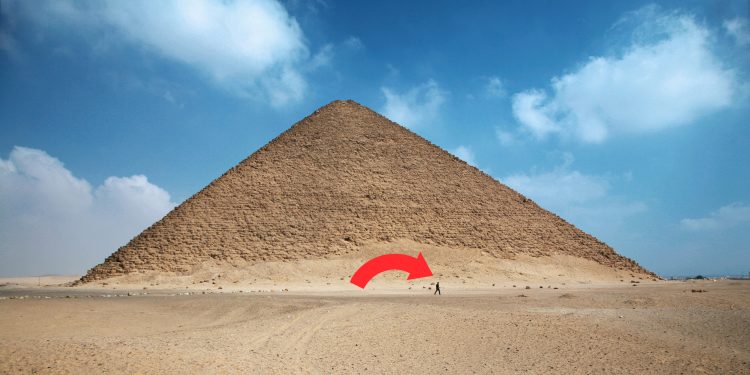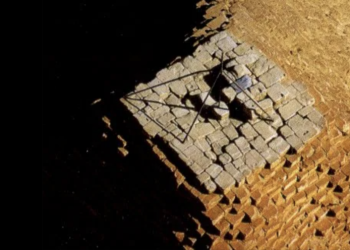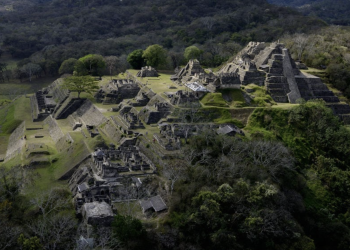Some six miles south of Saqqara, on top of a spur of the Libyan Plateau overlooking the ancient site of Memphis, two stone pyramids at Dahshur rise proudly on the horizon. It was here where one of the most important Pharaohs in Egyptian history built his pyramids. There, not far from the first pyramid, the Step Pyramid of Djoser, King Sneferu, the founder of the Fourth Dynasty, built his gigantic monuments. Sneferu’s predecessor is considered King Hu, but little is known about him. Nevertheless, Sneferu’s legacy is well documented. Not only is he famous for his pyramids, but the founder of the Fourth Dynasty is also famous for an expedition that he sent south in order to restore order in Egypt’s southern frontiers.
This expedition is believed to have brought back around 7,000 captives and 200,000 oxen and sheep. Furthermore, Sneferu’s name was recorded in the mines of Sinai, something that indicates he promoted mining in the region. Long after his death, the people of Egypt referred to him as a generous, kind, and beloved king. Such was his fame that many kings of the 12th Dynasty chose to be buried near him. By the time of the 12th Dynasty, Sneferu was deified and worshiped side by side with gods such as Ra and Osiris.
The Greatest Pyramid Builder
When Sneferu rose to the throne, the only pyramid that stood was that of Djoser. However, Sneferu would eventually become the greatest pyramid-builder in Egyptian history by constructing three colossal pyramids and a smaller one. In fact, the total mass of stone used in the construction of his pyramids exceeds even that of his son Khufu, the Great Pyramid of Giza. Of the three colossal pyramids, the Bent and Red pyramids are the most interesting. However, the pyramid at Meidum represents a path toward the first true pyramid. The pyramid at Meidum is in ruins, and only three towers remain today. Similar to the pyramid of Djoser, the pyramid at Meidum was built in stages.
It is believed to have started as a Step pyramid consisting of a total of seven steps. However, before workers had completed the fifth step. Sneferu wanted the pyramid enlarged to a total of eight steps. Then, Sneferu moved to Dahshur, where another pyramid was ordered to be built. Eventually, around, Sneferu ordered workers to continue the work at Meidum. This is why the pyramid at Meidum represents the beginning and end of Sneferu’s pyramid program. The three colossal towers we see today result from the pyramid’s outer parts being stripped away. It is documented that the Pyramid of Meidum was used as a quarry in modern times. It is believed that around the 29th year of his reign, he ordered the pyramid at Meidum to be transformed from a Step Pyramid to a True Pyramid.
The Bent Pyramid
Sneferu abandoned the Meidum pyramid to build the Bent pyramid. The construction of pyramids was experimental at this time, and no blueprints were available. In the past, step pyramids had faces sloping between 72 and 78 degrees. For a true pyramid, this was too steep. As evidenced by its core, the Bent pyramid was originally a smaller pyramid with a slope of about sixty degrees. There were structural problems with the pyramid, and emergency measures were taken to prevent its collapse. To give the pyramid its 55-degree slope, an additional girdle was added to its stump. According to the traditional method, the stones were originally laid sloping inwards when the pyramid was constructed. This reduced angle, however, seemed to pose more structural challenges to the builders. Halfway up, the builders began setting horizontal courses.
The builders finally realized that the upward-leaning courses added stress to the structure instead of strengthening it. The slope decreased from 45 degrees to 43 degrees by building the pyramid in this manner. Because of this change, the Bent Pyramid has a bend.
The North (Red) Pyramid
Eventually, around the 30th year of his reign, Sneferu turned toward building what would become his largest pyramid. Called the Red, or North Pyramid, this structure was built having a much gentler slope of 43 degrees. Unlike the pyramid at Meidum, and the Bent pyramid, when construction work began, the workers knew the process that was needed to complete the monument without issues. Also called the Shinning Pyramid, this structure had a base length of 220 meters and a height of 105 meters. The Red Pyramid’s pyramidion, or capstone, has been discovered and reconstructed at Dahshur and is on display. However, despite its apparent use, it’s unclear whether it ever was used since its inclination differs from a pyramid’s.
The importance of Sneferu’s pyramids resides in the fact that they represent a clear evolution in constructing a pyramid. His pyramids show the path workers took from transforming a Step Pyramid into a true pyramid. More importantly, it is believed that Sneferu’s Red Pyramid laid down the path his son Khufu would take and build the Great Pyramid of Giza.
Have something to add? Visit Curiosmos on Facebook. Join the discussion in our mobile Telegram group.











